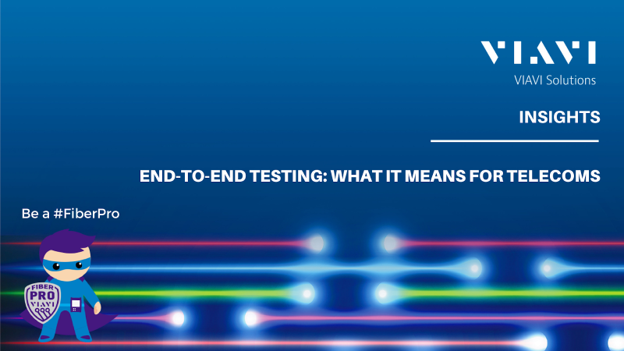End-to-End Testing: What It Means for Telecoms

Telecommunication networks play an integral part in facilitating the operations of a wider global market. As such, they are expected to handle large loads of bandwidth at a rapid pace, while maintaining data integrity. Ensuring that the software provided by telecoms companies works flawlessly is of paramount importance. One way to do so is by using software testing methodologies, such as end-to-end (E2E) testing.
End-to-end (E2E) network testing is critical for service providers but also presents some major challenges. In this article, we will discuss the importance of E2E Testing for telecom companies, especially as telcos look forward to introducing Open RAN architectures.
The Purpose of E2E Testing
With 5G deployment gathering momentum, telcos need to ensure that networks can concurrently support the number and variety of use cases that the technology will enable. End-to-end (E2E) Testing is a software testing methodology that is used to test an application flow from start to end. It enables service providers to replicate end-user scenarios, allowing them to ensure that their products are able to withstand periods of high demand. This is particularly important in the telecoms industry, where providers are normally expected to ensure that vast amounts of data is transmitted in real-time without undue delay or errors.
The main purpose of this testing is to simulate the real user scenario and validate the system under test, as well as its components, for integration and data integrity. It is commonly used to test that telecom software works at all points in the process of making a call without error or data loss from the sender to the receiver.
What Does E2E Testing Mean for Telecoms?
For telecom applications, E2E software testing mainly focuses on the end-user experience and tests real-user scenarios that are likely to occur. Tests are primarily used to determine how well it handles a range of cases, representing real-world user actions that may occur in the duration of a call. This means measuring the call success rate under a range of test actions, which may include call transfers, emergency calling, roaming, and more. The diversity of E2E Testing can reduce costs in finding, troubleshooting, and resolving issues, thus helping operators to deploy new products and services as timely as possible.
E2E Testing matters to telecommunication providers, particularly as telcos look to introduce Open RAN architectures into their networks, because it ensures that the whole network ecosystem works effectively without any communication breakdowns. When executed well, E2E Testing detects issues with components, subsystems, and workflows, thus contributing to increased efficiency and reliability of the entire system.
Challenges
There’s no such thing as perfect methodologies – every testing method has its own unique benefits and challenges. One of the challenges of E2E Testing is its scalability, as it can be difficult to simulate real-world bandwidth loads in a test environment. Furthermore, E2E Testing requires complex test scenario planning with a comprehensive, detailed list of conditions for every single user function, making it a labor-intensive process.
However, these challenges shouldn’t deter telcos from automating E2E Testing, as the potential benefits far outweigh its challenges. Following best practices can help telcos to maximize the advantages of automated E2E Testing.
A Complete E2E Testing Solutions
Open RAN architectures are attracting a lot of interest from telcos for their ability to introduce more software into their networks, thus reducing costs and diversifying their supply chains. Consequently, E2E Testing must be able to include this new architecture. However, it takes time to integrate O-RAN components from many different vendors. As RAN and core are converging, testing solutions must be able to offer a complete E2E test solution that run from RAN to Core, thus simulating real-world traffic to ensure networks are robust enough to cope with demand.
VIAVI’s TM500 and TeraVM are designed to solve this challenge, delivering UE, O-RAN subsystem, and core network simulation to enable a complete testing solution to eliminate any scope for synchronization errors.
Proven Results
In September and October last year, VIAVI Solutions participated in a global O-RAN plugfest hosted by tier-1 CSPs and the O-RAN ALLIANCE. We verified 12 multi-vendor O-RAN architectures using the TM500 E500, demonstrating how to automate E2E O-RAN tests and showing that end-to-end testing can incorporate a truly multi-vendor O-RAN architecture.
In short, E2E network testing has its challenges, but there is a solution in our comprehensive test suite that is backed by a long history of industry experience. VIAVI Solutions’ End-to-End Wireless Network Test is helping to reduce the burden customers experience with integration, achieving/optimizing performance, meeting interoperability objectives E2E, in realistic traffic and mobility scenarios. VIAVI’s full range of interactive tools, testing capabilities, and solutions will give you a competitive edge in your industry, no matter which industry or region you’re working within.



